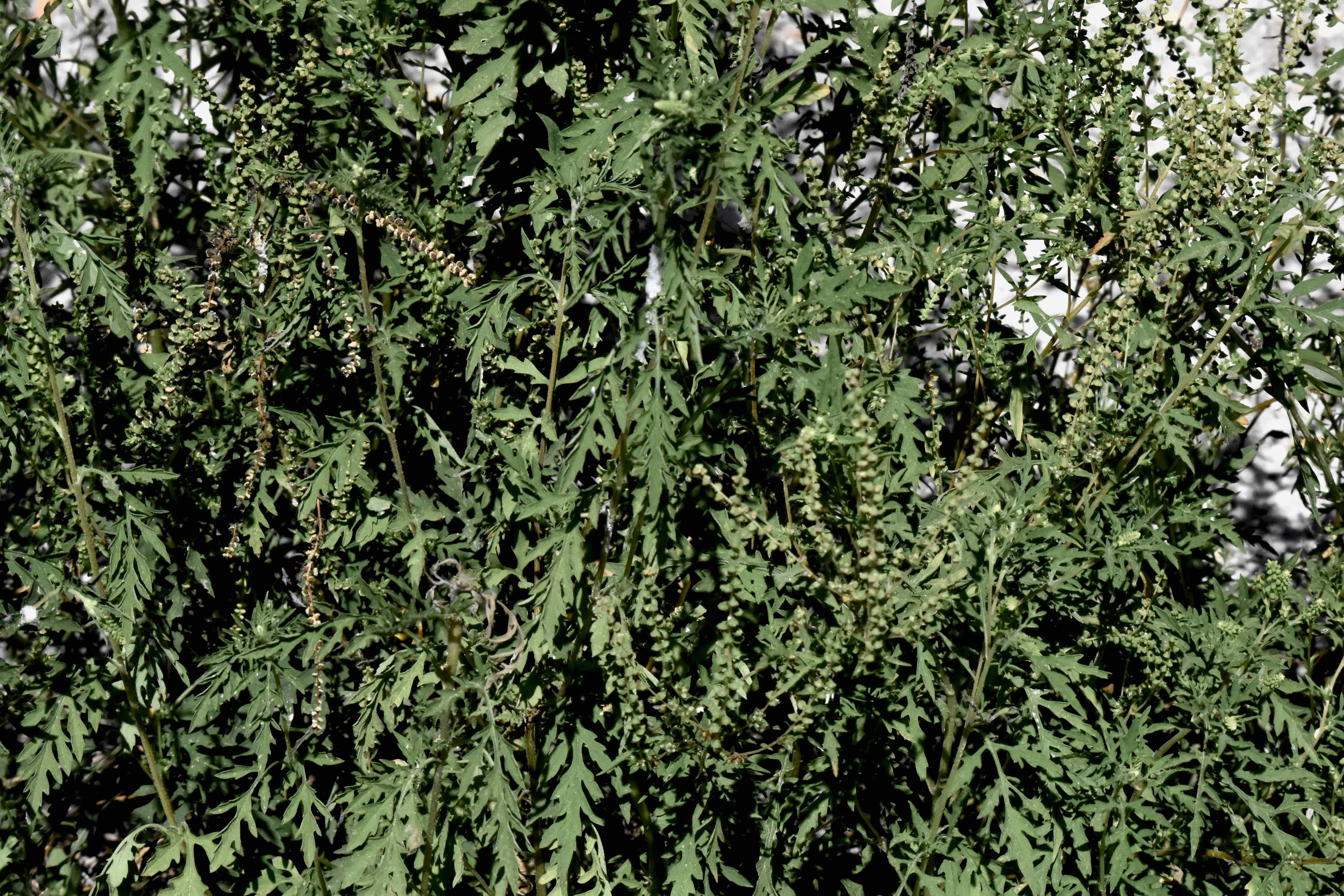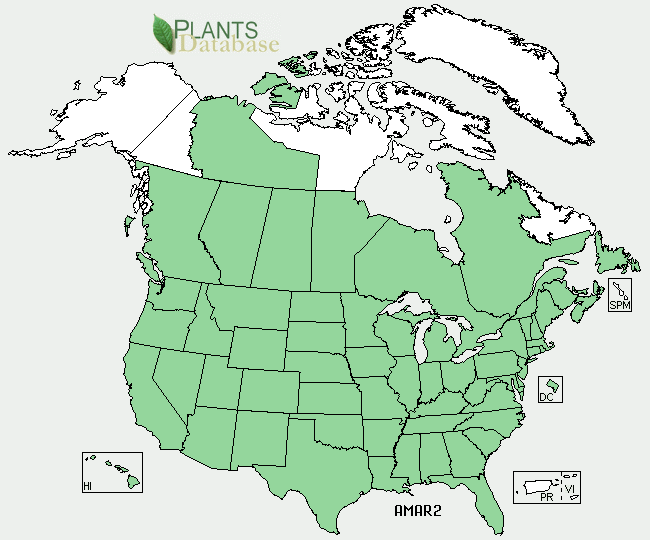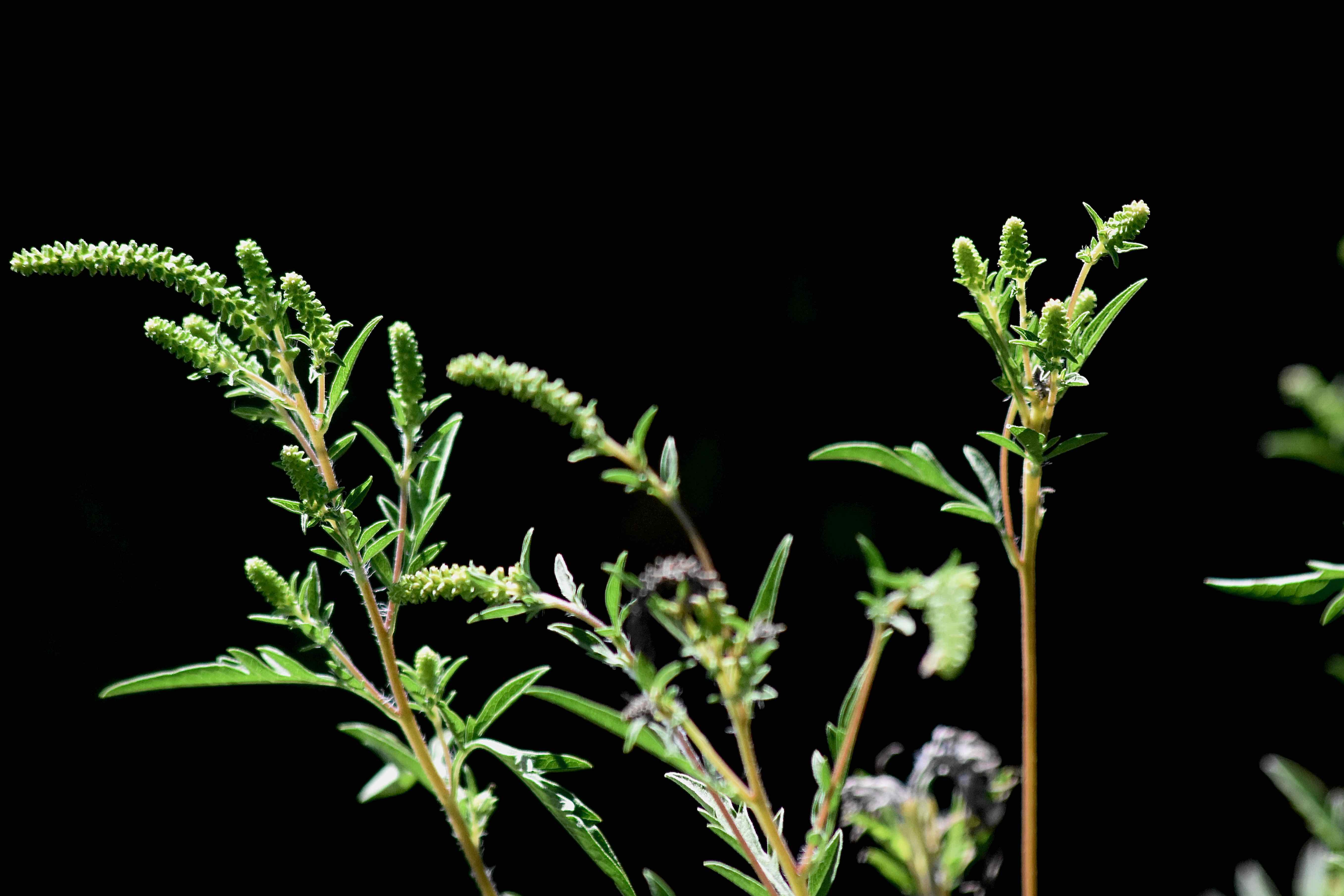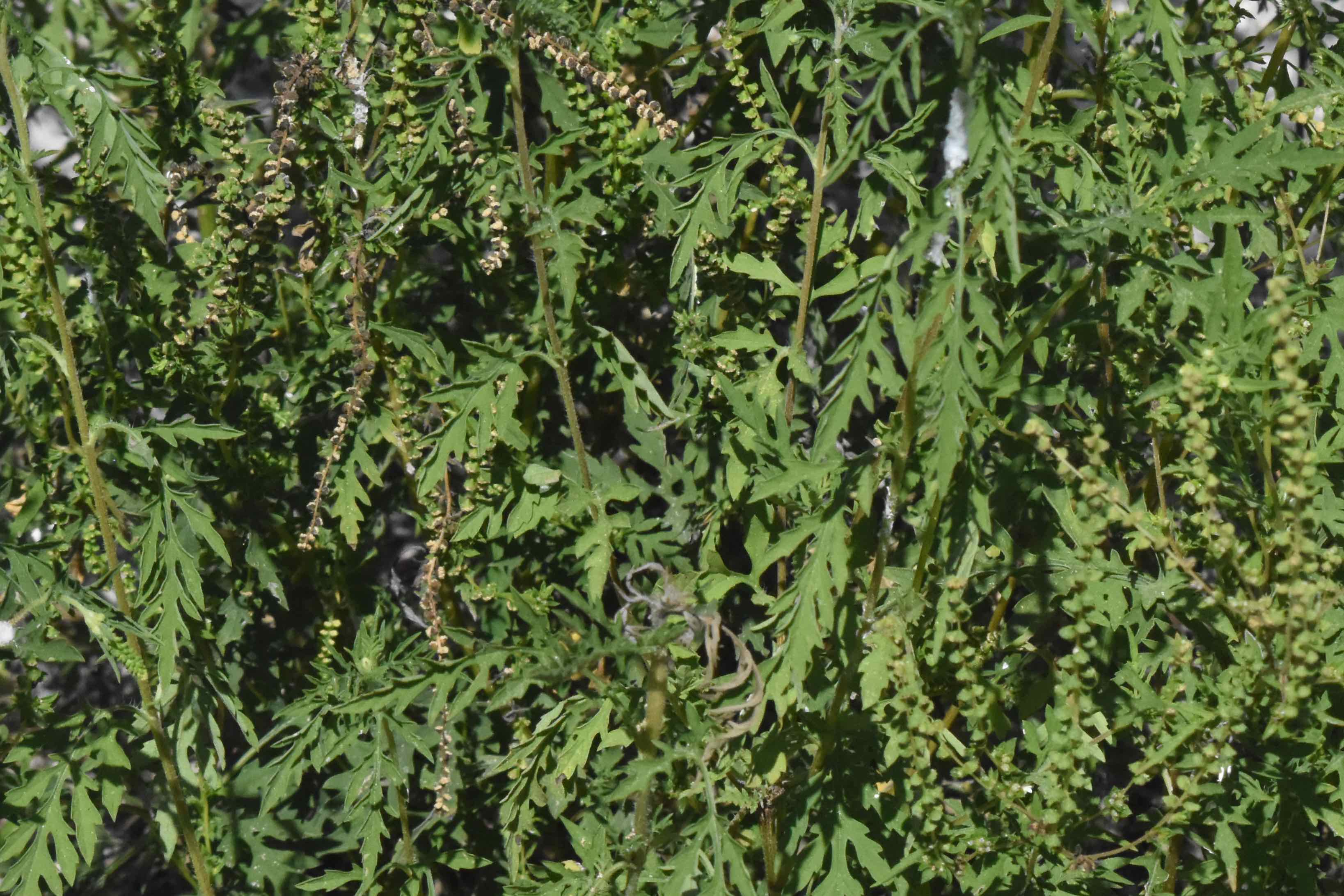
Ragweed, photographed at Highlands Scrub Natural Area, Deerfield Beach, Broward County, in July 2016.
There might be plants that are more annoying to more people than common ragweed, Ambrosia artimisifolia, but you'd be hardpressed to name one.
Poison ivy and poisonwood come to mind, but generally speaking, you have to come in contact with them in order to suffer their wrath. Ragweed comes to you no matter where you live, no matter how hard you try to avoid it.
According to the University of Tulsa, ragweed is the "most important cause of allergenic rhinotis and pollen asthma in North America" and "accounts for more hay fever than all other plants together." In other words, it makes people sick and sneeze and miserable. A lot. Which begs the question, is there anything good to say about about this plant? Of course! After all, even the aforementioned poison ivy and poisonwood are important sources of food for a variety of wildlife. The ultimate question is whether in the end, the benefits outweigh ragweed's multitude of evils?
Now for some ragweed basics. Ragweed is a Florida native, found in all but a handful of counties in the Panhandle. Its range extends through most of North America with the exception of the northern-most tier of the continent, southward through the Caribbean, Mexico, Central America and into South America. It's made its way into Asia and parts of Europe, where it is an invasive menace in more ways than one.
The plant can grow to a foot or two off the ground; its leaves are arranged opposite on the stem and are deeply lobed, almost lacy looking. The flowers are a dull green or greenish yellow and not attractive at all, which is a clue as to why this guy is such an allergenic menance. It is an annual, flowering summer into fall. Altogether, there are 17 species of ragweed in North America, of which three are found in Florida. Common ragweed is the most common type, as one might gather from the name.
The other two native to Florida are giant ragweed, Ambrosia trifida, found mostly in a few northern and Panhandle counties (we have seen it in South Florida) and beach ragweed, Ambrosia hispida, found in Miami-Dade, Volusia and a few other coastal counties. It is exceedingly rare.
Ragweed seed is high in both protein and oil, which makes it a favorite food for birds, bunnies, mice and other wildlife. Sheep, horses and cattle will graze on it. Up north, it is especially important in winter, because the seed heads stand above typical snow falls, thus accessible to animals when other seed plants aren't. The seed is edible for humans as well. In fact, there is archeological evidence that Native Americans cultivated giant ragweed as a grain. And ragweed was vital as a medicine for a number of Native American tribes. The Cherokee rubbed crushed ragweed leaves on insect stings and skin rashes, including hives. They treated fevers and pneumonia with it. The Delaware made a poultice from the plant to prevent blood poisoning. The Houma used it for menstrual problems, the Iroquois for strokes, the Lakota used it for toilet paper (really) and on and on.
The problem is that ragweed produces pollen grains by the billions. Unlike golden rod, another plant with a reputation as a major allergenic (unfairly earned), all that ragweed pollen is intended to be scattered by the wind. Those dull-looking flowers don't attract the usual pollinating suspects — bees, butterflies and other nectar-loving insects. Golden rod enlists insects to spread pollen, as evidenced by its brilliant blooms.
And much of ragweed's pollen ends of up in our nostrals. Late summer to late fall is the worst time for sufferers. But if you are allergic to ragweed, you already know that. A lot of it also ends up creating other ragweed plants. The stuff is crazy aggressive — a single plant can produce 5,000 seeds; both the pollen and the seeds can remain viable for decades, so if conditions aren't quite right for germination, it can always wait awhile. Ragweed also reproduces via rhizomes, underground stems from which new plants emerge. One odd thing is the seeds can be bought on the internet, most likely for those interested in attracting birds and wildlife.
Thing is, ragweed increasingly is becoming a global problem. It migrated to Europe in the late 19th century and became firmly entrenched in Central and Eastern Europe by the 1940s. In addition to the health problems it causes, it's also a major agricultural pest. A report drafted by the European Union in 2013 found ragweed costing the continent about $5 billion annually in agricultural damage, productivity loss and health expenditures. The ragweed problem is expected to get worse over the next few decades, driven in large measure by climate change. Oh and if the allergy problems weren't enough, ragweed can cause contact dermatitis.
Other common names for common ragweed: annual ragweed, Roman wormwood, small ragweed, low ragweed and short ragweed. It is a member of Asteraceae, the sunflower family.
Click on photo for larger image
U.S. Department of Agriculture Distribution Maps



Links for Ragweed



